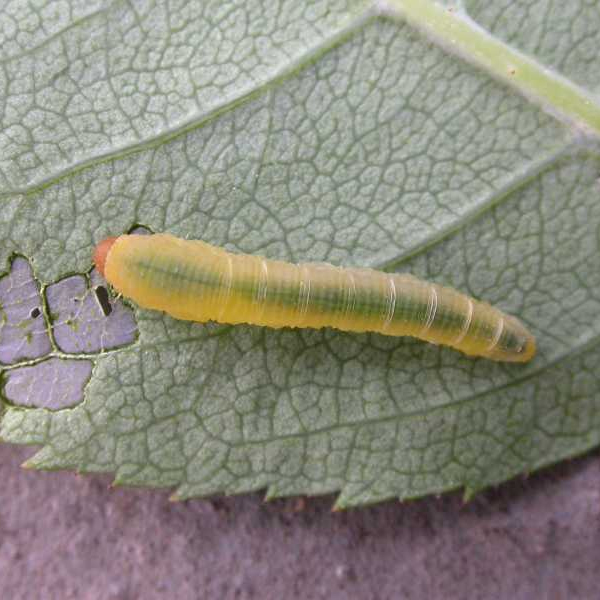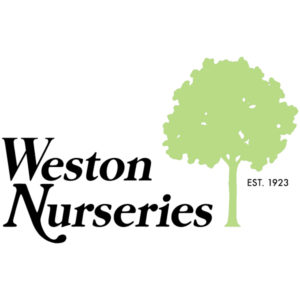Rose and pear slugs are actually two different insects with many similarities. Neither is a true slug. They are both larval stages of flying insects known as sawflies. They secrete a slimy substance over their body surface that makes them resemble small slugs. Rose sawflies are yellow-green in color and can grow to a ¾ inch maximum length, while pear sawflies are shiny olive green to black and grow to a ½ inch maximum length. As their names suggest, rose sawflies feed on the leaves of rose shrubs, and pear sawflies are pests on pear trees, although they can also feed on cherry, plum, ash, hawthorn, cotoneaster, and other species.
Sawfly larvae feed on the surface of the leaves of their respective host plant, removing the soft tissue and leaving behind the papery, translucent surface and veins. Heavy defoliation gives plants a brown scorched appearance. In general, light to moderate infestations are cosmetic in nature and rarely harm the host plant. Heavier attacks, however, can weaken plants when leaf loss stresses them to the point of vulnerability to other insect and disease attacks.
Pear sawfly: Adult sawflies emerge in late spring and lay their eggs on the underside of host plant leaves. Larvae appear several weeks later, feed on soft leaf tissue for about a month, and then drop into the soil to pupate. A second generation can begin in late summer.
Rose sawfly: Adult sawflies emerge in early spring and lay their eggs on the underside of host plant leaves. Larvae appear several weeks later, feed on soft leaf tissue for about a month, and then drop into the soil to pupate. European rose slug sawfly (Endelomyia aethiops) produces only one generation per year, but another related species, the bristly rose slug sawfly (Cladius difformis), can produce two to six generations per year. A third species, the curled rose slug sawfly (Allantus cinctus) generally produces two generations per year. The three species are all similar in color (light green), but are easily distinguished: bristly roseslug sawflies have bristle-like hairs covering the body, and curled roseslug sawflies curl up the body when at rest.
Integrated Pest Management Strategies
1. Check plants for signs of infestation. Early detection can often result in simple cultural control measures. Begin looking for sawfly larvae in mid-spring (rose sawflies) or early summer (pear sawflies). Inspect both the upper and lower surfaces of the leaves. For light infestations, remove the infested leaves and destroy the larvae. A forceful spray of water out of a garden hose can also provide control by knocking off and killing many of the soft-bodied larvae. Be sure to aim the water at both the upper and undersides of the leaves. Continue checking plants throughout the growing season.
2. Support natural enemies of sawflies by responsible pesticide usage. Insects such as parasitic wasps, insectivorous birds, small mammals, and predaceous beetles, as well as fungal and viral diseases all assist in keeping sawfly populations lower. Restraint in the use of pesticides allows beneficial species to assist your control efforts.
3. Use an Insecticide. Chemical controls are also available, but should only be used when necessary, not routinely as a preventive measure. Horticultural oil, insecticidal soaps, neem oil, bifenthrin, carbaryl, malathion, permethrin, cyfluthrin, imidacloprid, and acephate can all be used to control sawflies. Apply pesticides only when larvae are actually present before infestations reach critical levels. Always be careful to read the label directions fully before applying any pesticide, and follow directions completely. Not effective: Bacillus thuringiensis (Bt), a commonly used biological insecticide that offers control of many caterpillars, is NOT effective against sawfly larvae.
Organic Strategies
Strategy 1 is a strictly organic approach. For an organic approach to Strategy 2, control other insects using strictly organic methods. For an organic approach to Strategy 3, consult the Organic Materials Review Institute (OMRI™) for appropriate insecticidal soap and Neem products.
Source: Missouri Botanical Garden








